Corydoras aurofrenatus
Scientific name: Corydoras aurofrenatus
Common name: N/A
Family: Callichthyidae
Usual size in fish tanks: 5 - 6 cm (1.97 - 2.36 inch)
014
Recommended pH range: 6.4 - 7.5
Recommended water hardness: 3 - 19°N (53.57 - 339.29ppm)
0°C 32°F30°C 86°F
Recommended temperature range: 22 - 27 °C (71.6 - 80.6°F)
The way how these fish reproduce: Spawning
Where the species comes from: South America
Temperament to its own species: peaceful
Temperament toward other fish species: peaceful
Usual place in the tank: Bottom levels
Food and feeding
Corydoras aurofrenatus are bottom feeders and prefer to be fed in the evenings when they are most active. A well-balanced diet for this species should include high-quality sinking pellets or wafers, which are specifically designed for bottom dwellers. Supplement their staple diet with algae wafers to provide them with the necessary vegetable matter. Twice a week, treat them to protein-rich foods such as bloodworms and brine shrimp, either live or frozen. These treats are essential for their overall health and help to enhance their coloration and energy levels. Corydoras are peaceful fish and are not aggressive eaters, so ensure that food reaches the bottom of the tank where they can easily access it.
Origin
The Palespotted Corydoras (Corydoras aurofrenatus) is native to the river systems of South America, particularly the Paraguay River Basins. These slow-moving waters are typically soft and slightly acidic, with a substrate of fine sand or mud. The dense vegetation in these areas provides ample hiding spaces and food sources for the fish. In an aquarium setting, it is important to replicate these conditions to ensure that your Corydoras remain healthy and comfortable. Providing soft water with plenty of plants will help mimic their natural environment.
Sexing
As with most Corydoras species, sexing Corydoras aurofrenatus can be tricky. Females are generally larger and more robust than males, especially when viewed from above. Males tend to have a slimmer, more streamlined body shape, while females develop a rounded appearance when full of eggs. During the breeding season, the differences may become more pronounced as females prepare to spawn.
Breeding
Although breeding Corydoras aurofrenatus in home aquariums has not been widely documented, it is believed that they follow similar breeding habits to other Corydoras species. They are egg scatterers, meaning they will release their eggs over fine-leaved plants or even on the aquarium glass. To encourage breeding, maintain pristine water conditions and perform frequent water changes, mimicking the rainy season in their natural habitat. The eggs typically hatch within 3 to 5 days, depending on water temperature. Once the fry are free swimming, they should be fed on infusoria or liquid fry food, gradually transitioning to micro worms or newly hatched brine shrimp as they grow.
Lifespan
With proper care, Corydoras aurofrenatus can live for 3 to 5 years in captivity. A clean environment, a varied diet, and stable water parameters are essential for extending their lifespan and ensuring they remain healthy.
Tank Requirements
These peaceful bottom dwellers are best kept in groups of at least 5 to 6 individuals. A minimum tank size of 75 liters (20 gallons) is recommended, with plenty of horizontal swimming space. The tank should include soft sand or smooth gravel as a substrate to prevent damage to their sensitive barbels. Water conditions should be maintained at a temperature between 22-27°C (71.6-80.6°F), with a pH range of 6.4-7.5, and water hardness between 3-19°N (53.57-339.29 ppm). Providing hiding spots with plants like Amazon Swords or other Echinodorus species and Cryptocoryne will help them feel secure. These plants are ideal for creating a natural habitat, as they thrive in similar water conditions and offer excellent coverage. Ensure the tank is equipped with a gentle filtration system, as Corydoras prefer calm, well-oxygenated waters.
Tankmates
Corydoras aurofrenatus are peaceful and can be kept with a variety of other peaceful fish. Ideal tankmates include:
- Black Neon Tetra (Hyphessobrycon herbertaxelrodi)
- Rummy Nose Tetra (Hemigrammus bleheri)
- Emperor Tetra (Nematobrycon palmeri)
- Dwarf Gourami (Colisa lalia)
- Angelfish (Pterophyllum scalare)
Avoid aggressive or territorial species that may harass the peaceful Corydoras. Always ensure there are plenty of hiding spots and open swimming areas to keep stress levels low.
Short description
Corydoras aurofrenatus, commonly known as the Palespotted Corydoras, is a small, peaceful catfish that is perfect for community aquariums. These bottom dwellers spend most of their time foraging in the substrate for food and should be kept in groups for their well-being. They are hardy and adaptable, making them suitable for both beginner and experienced aquarists. With their gentle nature and ability to thrive in a wide range of water conditions, they are a great addition to any peaceful freshwater tank.
Pictures
Bought by aqua-fish.net from jjphoto.dk.



 Aspidoras
Aspidoras  Giant
Giant  Hognosed
Hognosed  Emerald
Emerald  Cascarudo
Cascarudo  Acre
Acre  Adolfo’s
Adolfo’s  Bronze
Bronze 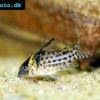 Agassizii’s
Agassizii’s  Spotted
Spotted  Skunk
Skunk  Corydoras
Corydoras 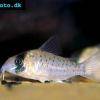 Fairy
Fairy  Pink
Pink 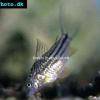 San
San  Bond’s
Bond’s  Spotted
Spotted  Tailspot
Tailspot  Concolor
Concolor  Cope’s
Cope’s 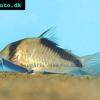 Sand’s
Sand’s  False
False  False
False 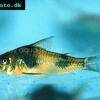 Ehrhardt’s
Ehrhardt’s  Elegant
Elegant 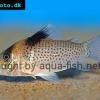 Saddle
Saddle  Fowler’s
Fowler’s  Gomezi
Gomezi 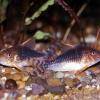 Palespotted
Palespotted 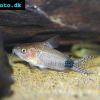 Guapore
Guapore  Dainty
Dainty  Mosaic
Mosaic  Imitator
Imitator  Julii
Julii  Leopard
Leopard 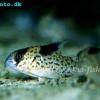 Black
Black  Slant-bar
Slant-bar  Bluespotted
Bluespotted  False
False  Bandit
Bandit  Mini
Mini 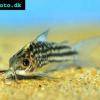 Napo
Napo  Corydoras
Corydoras 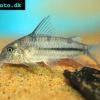 Blue
Blue  Nijssen’s
Nijssen’s 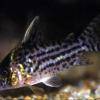 Ornate
Ornate  Peppered
Peppered  Panda
Panda  Albertini
Albertini  Pastaza
Pastaza  Corydoras
Corydoras  Many-spotted
Many-spotted  Pretty
Pretty  Dwarf
Dwarf  Iridescent
Iridescent  Reticulated
Reticulated 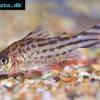 Bannertail
Bannertail  Robust
Robust  Schwartz’s
Schwartz’s  Black
Black 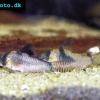 Longnosed
Longnosed  Seuss’
Seuss’  Smudge
Smudge  Masquerade
Masquerade 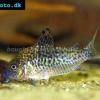 False
False  Millenium
Millenium  Pinkthroat
Pinkthroat  Sterba’s
Sterba’s  Longsnout
Longsnout  False
False  Miguelito
Miguelito 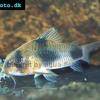 Twosaddle
Twosaddle  Xingu
Xingu 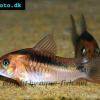 Black
Black  Porthole
Porthole  Flagtail
Flagtail  Brown
Brown  Spotted
Spotted